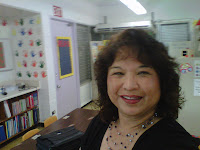ABOUT US
https://sites.google.com/a/gdoe.net/lyndon-b-johnson-elementary-school/
Tamuning, GU
671-64605046 / 671-647-5047
"Fully Accredited by the Western Association of Schools and Colleges"
lbjelementary.blogspot.com
DOE VISION STATEMENT
Our educational community prepares students for life, promotes excellence and provides support.
N avigate into technology
E xpress and develop creativity
L earn expected academic skills
S trive for success
ANGELS CODE OF CONDUCT
A lways walk .
B e respectful .
Message From the Administrators!
MESSAGE FROM THE ADMINISTRATORS
Welcome to SY 2012-2013 at
Our expectation for this school year is to continue to support each other's efforts to prioritize student learning. At the end of your child's school years in Kindergarten & First Grade, it is our dream that she/he will embrace the idea of life-long learning and approach each challenge as an opportunity for growth and development towards the achievement of full potential. Once again, WELCOME, and enjoy watching your child/ren blossom academically, socially, emotionally, and physically.
Your Partners For Life Long learning,
KATHERINE M. REYES, Principal
GERALDINE D. QUEJADO, Assistant Principal
UPCOMING LBJ EVENTS
UPCOMING LBJ EVENTS:
November 6: General Election (NO CLASSES)
November 7: ELEMENTARY Parent-Teacher Conference (N0 CLASSES)
November 12: Veteran’s Day
November 15: F.A.S.T. Parent Workshop
November 22: Thanksgiving
November 23: Flexible Make-up #1 (NO CLASSES)
Guam Department of Education School Calendar 2012-2013
https://sites.google.com/a/gdoe.net/gdoe/Home/sy-calendar
Monday, November 19, 2012
1st Quarter Perfect Attendance (SY2012-2013)
Thursday, November 8, 2012
ESL-September_2012
"What is ESL?
by Lois T. Gumataotao, ESL Coordinator/Teacher
A student is eligible under the ESL Program based on the HLS (Home Language Survey) a parent completes as part of the registration process:
1. Which language did your son or daughter speak when he or she first began to talk?
2. What language does your son or daughter most frequently speak at home?
3. What language does your son or daughter most frequently speak with friends?
4. What language do you use most frequently to speak to your son or daughter?
5. Name the language(s) most often spoken by the adults at home?
If one or more of the 5 questions is answered with a language other than English, the student is eligible for the ESL Program and will be given the LAS Links Placement Test. Parents will be contacted if their child will be participating in this program.
Every effort will be made to meet the needs of the ELs to integrate them into the regular classroom as quickly and completely as possible. If you need more information on the ESL Program, please feel free to call me at 649-8256.
Thursday, May 24, 2012
SPED: Jan. 2012
Slow vocabulary growth, often
unable to find the right word
|
Slow to learn the connection between letters and sounds
|
Difficulty rhyming words
|
Makes consistent reading and
spelling errors including letter reversals (b/d), inversions (m/w),
transpositions (felt/left), and substitutions (house/home)
|
Trouble learning numbers, alphabet,
days of the week, colors, shapes
|
Transposes number sequences and
confuses arithmetic signs (+, -, x, /, =)
|
Extremely restless and easily distracted
|
Slow to remember facts
|
Confuses basic words (run,
eat, want)
|
Behind grade level by two years
in conjunction with the other
|
SPED: December 2011
Special Education: "What is IDEA?"
Wednesday, May 23, 2012
ESL: May/June 2012
"End-of-the-Year Poem"
ESL: April 2012
"Some Teaching Techniques Teachers Use To Teach English Language Learners!!
ESL: March 2012
"How Do English Language Learners Learn?"
ESL: February 2012
"Showing Appreciation in February"
Lois T. GumataotaoESL Teacher/Coordinator
 Encourage acts
of kindness within the family. Valentine's month is an excellent time to renew
loving relationships in the home, so be sure to make a point of doing fun and
thoughtful things for other family members.
Encourage acts
of kindness within the family. Valentine's month is an excellent time to renew
loving relationships in the home, so be sure to make a point of doing fun and
thoughtful things for other family members. Monday, May 7, 2012
7 FAST Workshop/Resource Expo (Tamuning Elementary School Cafeteria, 5:30pm)
7 Character Project Due (Friendship)
11 4th Quarter Family Project (My School Year Memory Book)
14 Reading Logs Due
17 Spirit Day (Bring Pompoms or Streamers)
25 Reading is the Key and Very Important Parents (VIP) Ceremonies
28 Memorial Day (Holiday)
31 First Grade Portfolio Showcase
2 - 6 Spring Break
9 Classes Resume
11 High School Parent - Teacher Conference
12 Middle School Parent - Teacher Conference
13 Elementary and Head Start Parent Teacher Conference (No Classes)
16 Character Project Due ((Good Judgment/Maolek Kotdura)
20 Spirit Day (Newspaper Art)
30 Angels of the Month Ceremony and Discipline Plan Incentive
April 27 - May 4 SAT 10 Testing
Tuesday, January 24, 2012
January 2012


December 2011
Scrooge frost holly bell sleigh
lights stocking tree carol Rudolph
cane card gift
elf backpack North Pole

November 2011

 Look through magazines of pictures of trees
with their leaves of beautiful fall colors such as red, yellow, orange and
brown!
Look through magazines of pictures of trees
with their leaves of beautiful fall colors such as red, yellow, orange and
brown! 




